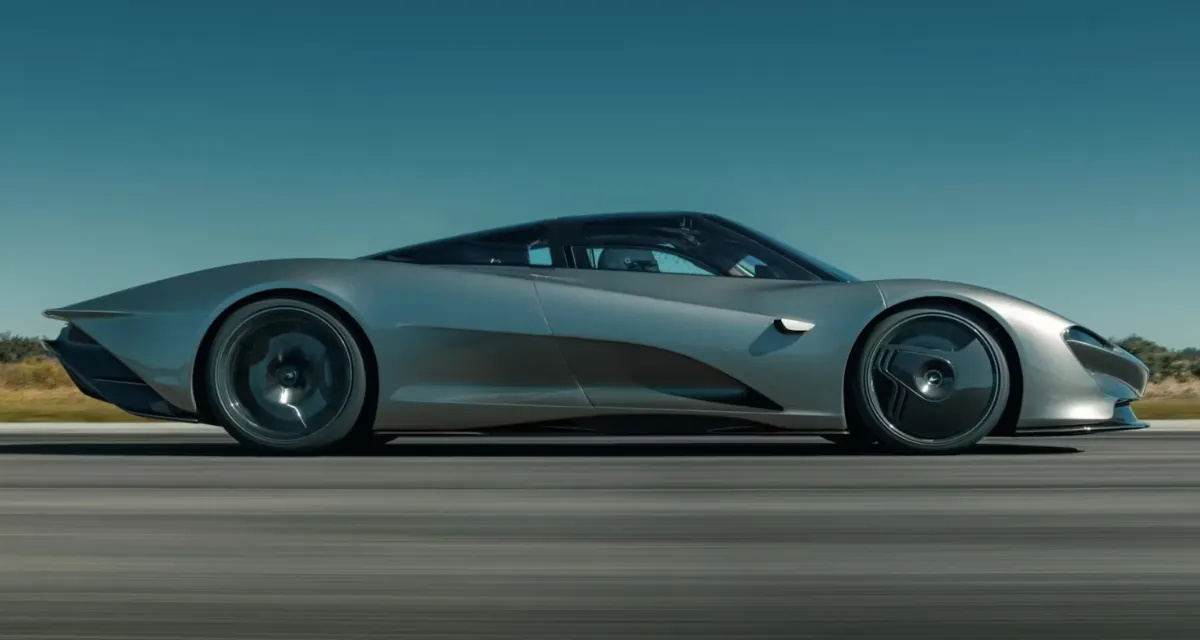

It's no secret that aerodynamics can both vastly improve and hurt an electric vehicle in terms of efficiency and range. With this in mind, automakers have engaged in constant competition to design the most aerodynamically efficient cars that maximize performance and increase range. This article explores some leading electric vehicles renowned for their low drag coefficients, a measure of how well a vehicle cuts through the air. Well here are the world’s top 12 Most Aerodynamic Electric cars.
Leading the pack is the Lucid Air, a sleek electric sedan that boasts an impressively low drag coefficient of 0.197. This Silicon Valley creation offers an astonishing range of 520 miles, making it the longest-range electric vehicle available today. The Lucid Air's aerodynamic prowess is largely credited to Jean-Charles Monnet, a former aerodynamicist for Red Bull Racing. Monnet has applied his expertise from the high-speed world of Formula One to ensure that the Lucid Air slices through the air with minimal resistance. Though the car is not yet available worldwide, it has already made waves in the U.S. market.
Mercedes has long been a pioneer in aerodynamic design, and the EQS is a testament to this legacy. With a drag coefficient of 0.200, the EQS is a marvel of engineering, featuring a smooth underbody, active radiator shutters, and a sophisticated air control system. These features allow it to achieve a range of up to 453 miles. Introduced in 2021, the EQS was the most aerodynamic production car at the time, showcasing Mercedes' commitment to blending luxury with cutting-edge technology.
Nio, a Chinese electric car manufacturer, has gained recognition for its innovative approach to electric vehicles. The Nio ET7, a luxury electric sedan, boasts a drag coefficient of 0.208. Equipped with a massive 150 kWh battery, it offers an impressive range of 650 miles, based on China's NEDC testing protocol. Nio has also developed a network of battery swap stations in China, allowing drivers to replace their depleted batteries with fully charged ones in minutes. As Nio expands its presence in Europe, the ET7 is expected to make its mark on the international market.
Since its debut in 2012, the Tesla Model S has set a high standard for electric vehicles. With its refined design and constant technological updates, the Model S maintains a competitive drag coefficient of 0.208. Tesla's commitment to aerodynamics is evident in the Model S's evolution, which has seen its drag coefficient improve from 0.24 to 0.20 over the years. Despite its unconventional design, the Model S remains a benchmark for performance and efficiency in the electric vehicle industry.
Hyundai's Ioniq 6 is a testament to the company's innovative spirit, drawing inspiration from both the automotive and aeronautical worlds. With a drag coefficient of 0.21, the Ioniq 6 incorporates design elements from classic streamliners and even birds of prey. Its rear spoiler winglets, inspired by the Supermarine Spitfire, enhance its aerodynamic efficiency. Thanks to advanced aerodynamic testing, the Ioniq 6 can travel 62 miles further per charge than its predecessor, the Ioniq 5.
The Lotus Emeya represents a new chapter for the iconic British brand, known for its lightweight sports cars. As the first four-door hyperGT from Lotus, the Emeya boasts a drag coefficient of 0.21. Its design features active aerodynamics, including an air dam under the front bumper and a rear spoiler that adapts to driving conditions. These elements not only reduce drag but also enhance stability and downforce at high speeds. The Emeya is a glimpse into the future of Lotus as it embraces electric power.
BYD, short for Build Your Dreams, is another Chinese manufacturer making strides in the electric vehicle market. The BYD Seal, a stylish sports sedan, features a drag coefficient of 0.219. Its low-slung design and aerodynamic shape contribute to a range of 354 miles. BYD emphasizes its vehicle's "golden ratio" for optimal airflow, although much of this claim may be more marketing than science. Nonetheless, the Seal presents a strong alternative to established models like the BMW i5 and Tesla Model 3.
Porsche's entry into the electric vehicle market, the Taycan, combines classic sports car styling with impressive aerodynamic performance. The Taycan's drag coefficient of 0.22 is the lowest of any Porsche model, achieved through extensive wind tunnel testing and advanced computer simulations. Its design includes air curtains around the front headlights, aero blade wheels, and a sophisticated rear diffuser. Porsche's meticulous attention to detail ensures that Taycan delivers both performance and efficiency.
XPeng, another Chinese electric car startup, is expanding its footprint in Europe with the P5 sedan. With a drag coefficient of 0.223, the P5 offers a range of up to 289 miles from its 66 kWh battery. XPeng has been making strides in Europe, with the P5 available in countries like Denmark, the Netherlands, Norway, and Sweden. The P5 exemplifies the growing influence of Chinese manufacturers in the global electric vehicle market.
In the final statement, The race to create the most aerodynamically efficient electric vehicles is pushing manufacturers to explore innovative designs and technologies. From the Lucid Air's groundbreaking range to the Tesla Model S's enduring appeal, these vehicles showcase the future of transportation. As electric cars become more prevalent, the focus on aerodynamics will continue to drive advancements in efficiency, range, and performance, shaping the next generation of sustainable transportation.
Also Read: